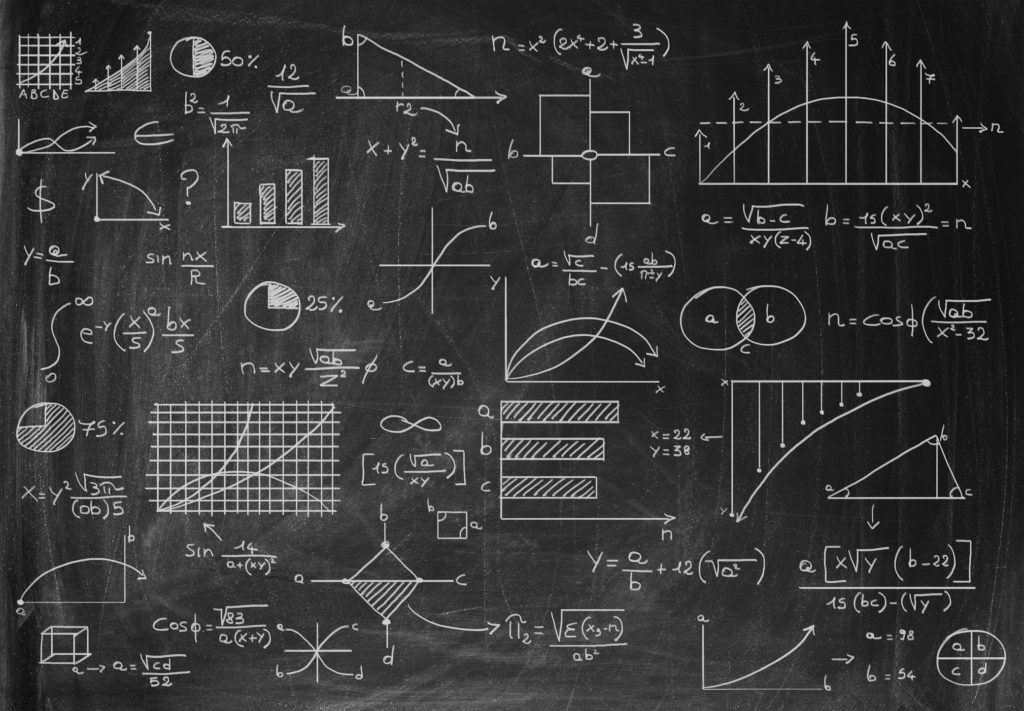4A2. Fields & Polynomials over Finite Fields - JulTob/Mathematics GitHub Wiki
Learn about finite fields and polynomial arithmetic by deciphering an alien number system! 🛸👽
You are an interstellar mathematician working on a distant planet 🌍🛸 where aliens use a strange number system.
- Numbers wrap around (just like modular arithmetic).
- The only allowed numbers are {0, 1, 2}.
- Instead of regular addition and multiplication, they use mod 3 arithmetic.
- The aliens have discovered a special type of polynomial math that forms a finite field.
Can you decode their system and use it to solve their polynomial puzzles? 🤔
The aliens use the set:
where all arithmetic is done modulo 3:
✅ This system satisfies field properties (closure, associativity, identity, inverses, and distributivity).
The aliens don’t just stop at numbers—they invent polynomials using their number system.
They define the set of polynomials:
These are polynomials where coefficients are from
$( f(x) = x^2 + 2x + 1 )$ $( g(x) = 2x^3 + x + 2 )$
The aliens perform polynomial arithmetic, where addition and multiplication follow normal polynomial rules, but the coefficients obey mod 3 rules.
Step by step:
Combine like terms:
✅ The result is 0—these polynomials canceled out!
The aliens also multiply polynomials mod 3.
Multiply:
Using normal multiplication:
Combine like terms:
Since
✅ The aliens say that:
In modular arithmetic, we take normal numbers and apply a "wrap-around" rule (modulus).
For example, in
with addition and multiplication mod 5.
Now, we ask:
- What if we want to build a similar system for polynomials?
- Can we create a polynomial version of modular arithmetic?
👉 This is why we move from numbers to polynomials!
Just as modular arithmetic creates a structured number system, we can create polynomial rings to structure polynomial arithmetic.
In regular modular arithmetic, we say:
which means
For polynomials, we define modulus with polynomials in a similar way:
which means
-
Numbers Modulo 5:
-
$( 8 \equiv 3 \mod{5} )$ (because$( 8 - 3 = 5 \times 1 ))$
-
-
Polynomials Modulo
$( x^2 + 1 )$ in$( \mathbb{Z}_3[x] )$ :-
$( x^4 \equiv 1 \mod{x^2 + 1} )$
(because$( x^4 - 1 )$ is divisible by$( x^2 + 1 )$ )
-
So polynomial modulus creates a structured way to control polynomial arithmetic, just like regular modulus does for numbers.
In modular arithmetic, we studied:
-
Numbers modulo a prime
$( p )$ (e.g.,$( \mathbb{Z}_5 )$ ) - Fields like
$( \mathbb{Z}_p )$ where every number has an inverse
But modular arithmetic has limits:
- What if we want more elements than just numbers?
- What if we need to work with functions instead of numbers?
- In
$( \mathbb{Z}_p[x] )$ , we extend modular arithmetic to polynomials. - This lets us define new types of number systems, such as finite fields.
✅ This is why we move from modular arithmetic to polynomial rings!
Imagine you are an alien scientist working in a lab that only allows certain numbers.
- The lab uses modular arithmetic to protect information.
- You discovered that the scientists are using polynomial modulus instead of numbers.
- The lab uses
$( x^2 + 1 )$ as a "modulus lock." - What happens to
$( x^4 )$ under$mod ( x^2 + 1 )$ ? - Can you predict the system they built?
(Hint: It’s similar to numbers mod 5, but more powerful!)
💡 Solution
⚜️ Goal: Compute
We want to see how powers of
📌 Step 1: Understanding Modulus with Polynomials
In modular arithmetic with numbers, we say:
$8 ≡ 3_{ mod 5}$
which means 8 and 3 are the same in
For polynomials, we do the same:
-
$f(x)≡g(x)_{mod p(x)}$ if$f(x)−g(x)$ is a multiple of$p(x)$ .
In
$x^2≡−1_{mod (x^2+1)}$
We are working in
-
$−1≡2_{mod3}$ $x^2≡2_{[mod (x^2+1)] [mod 3]}$
- Polynomials behave like numbers, but they give us more structure.
- Polynomial modulus lets us build number systems beyond integers.
- This leads to finite fields, which are essential in coding theory, cryptography, and algebraic structures.
Using
(Hint: Replace
- 1️⃣
$x4$ mod$x^3+x+1$ $(x^3)·x$ $(-x-1)·x = -x^2 - x ≡ -x^2 - x +x^3+x+1 = +x^3 -x^2 +1$ $x^3 -x^2 +1$
- 2️⃣
$x^5$ mod$x^3+x+1$ $(x^3)·x^2$ $(-x-1)·x^2$ $-x^3 - x^2$ $-(-x-1) - x^2$ $-x^2 + x + 1$
- 3️⃣
$x^6$ mod$x^3+x+1$ $(x^3)·(x^3)$ $(-x-1)·(-x-1)$ $x^2 + 2x +1$
